| SIMON DENISON IMAGE & TEXT |
| PREVIOUS | NEXT |
THE NEW PHOTOGRAPHY GALLERIES
News earlier this year of the loss of Arts Council funding at a few photography organisations, such as Side Gallery and Hereford Photography Festival, may have given the impression that the photo-gallery world is entering lean times, in keeping with a less buoyant economy. Some galleries are certainly feeling the pinch. But overall, the reality may not be quite so disheartening. With several publicly-funded photography and art galleries engaged in major new building or refurbishment projects, and general art galleries showing photographs as never before, it seems rather that photography is at last receiving the infrastructural recognition that its status in the art world has long deserved. The scale of investment is impressive. In October, Open Eye in Liverpool reopens after a £570,000 relocation to a new space overlooking the Albert Dock World Heritage Site. In late November, the Scottish National Portrait Gallery unveils a £17.5m refurbishment which includes a number of rooms assigned permanently or temporarily to photography. The Photographers’ Gallery reopens in February/March next year after an £8.7m remodelling. And in September 2013, Focal Point in Southend moves to a new £30m library building and public square close to the town’s seafront. Also in 2013, the National Media Museum plans to open a £5m photography space in London’s Science Museum if it can raise the funds. These impending developments follow the relocation of Impressions Gallery to a new purpose-built space in Bradford in 2007, and the £13m expansion – completed in 2009 – of London’s Whitechapel Gallery, which on recent form is proving to be one of the UK’s leading venues for important photographic shows (Walid Raad, John Stezaker, Paul Graham, Thomas Struth and Ian Berry this year alone). Dwarfing all of these is the scale of redevelopment at Tate Modern, now enthusiastically throwing its vast weight behind photography and currently constructing a £215m extension due to open in time for the summer Olympics in London next year. So what will these new spaces be like? Open Eye, one of Britain’s oldest specialist photography galleries, has long survived in a cramped, easily-missable building on a side street in Liverpool’s city centre. Its new waterfront location, by contrast, could not be more glamorous. Standing next to another spectacular brand-new public building – the Museum of Liverpool, which opened in July, gleaming white and strikingly shaped like an old-fashioned slide viewer or computer terminal – the new Open Eye occupies a street-level space in one of two wedge-shaped new buildings that curiously echo the Museum of Liverpool’s profile, but are shiny black, faced in tinted glass and polished granite. With other major museums only a few hundred yards away such as Tate Liverpool, the Merseyside Maritime Museum and the International Slavery Museum, Open Eye expects to quadruple its visitor numbers from about 12,000 to 50,000 a year and to attract substantial ‘passing trade’ for the first time in the gallery’s history. The gallery entrance will open onto a glass-covered public courtyard between the two wedge-shaped buildings alongside cafés and restaurants. The gallery’s jagged entrance wall, its line marked by chipboard sheeting at the time of my visit, will be faced in white corian and act as a display for vinyl artworks. Inside will be three gallery spaces: the entrance space with a 6m-high ceiling designed to impress visitors by its scale rather than for any practical hanging purposes, a second space flooded with natural light from a double-height glass wall, and a third space on a mezzanine level (next to curatorial offices and storage rooms) devoted to showing works for the first time from the gallery’s own 1,600-piece collection of mainly documentary photography, including works by Martin Parr, Tom Wood and John Davies, built up since the 1980s. The gallery leased the space as a bare shell from the building’s developers, with the relocation costs spent on fitting out the gallery through architects RCKa. Most of the funding came from public sources: £400,000 from the North West Regional Development Agency, £100,000 from the Arts Council and the remaining £70,000 from private sources. Increasing visitor numbers was one of the main rationales for public funding, but according to Patrick Henry, Director since 2004, the gallery has faced no pressure to ‘dumb down’ to appeal to a wider audience. Open Eye’s programming strategy will remain broadly unchanged, aiming to show ‘the best of contemporary photography’ with an emphasis on the documentary tradition, but also showing some lens-based conceptual art where illuminating connections can be made between different works on display, including those from the gallery’s collection. The opening show in October will be Mitch Epstein’s American Power, and the gallery plans to stage four main shows a year. With a floor area of 370m2 in total, the new gallery is about twice the size of the old premises, with 150m2 of hanging space compared to 100m2 previously. Even so, Open Eye will be paying less rent than in the old building, having negotiated a 35-year lease at about a third of the market rate, as the developers saw the advantage of having Open Eye on the ground floor for attracting buyers to the 376 residential apartments in the remainder of the two blocks. As a result, Henry believes the gallery’s future is reasonably secure, even though 60% of its running costs will continue to be provided by the Arts Council, whose grant has been increased to just over £200,000 a year by 2015.
The Scottish National Portrait Gallery might seem a curious place to stage general photographic exhibitions, but over recent years SNPG – rather than, say, the Scottish National Gallery or the Modern Art Gallery – has by default been Edinburgh’s principal public venue for large photography shows, and with the remodelling of the building over the past two years it made sense to set space aside here for a permanent photography gallery. The late-Victorian Neo-Gothic building, made of red sandstone and Category A listed for its historical/architectural importance, had become a dark and rather dowdy venue over recent years, following numerous mid-20th century tinkerings with the interior. Moreover, until 1998 SNPG shared space in the building with the National Museum of Antiquities and many rooms have remained antiquities stores, closed to the public, until the current overhaul. Now completely returned to gallery spaces over three floors, with a new mezzanine between first and second floors to house curatorial offices and an education centre, the building is now flooded with light as false walls and ceilings have been ripped out to reveal tall arched Victorian windows and, on the top floor, pitched glass lights in the roof. Overseen by Glasgow-based architects Page/Park, the building’s architectural history has been respected by being substantially revealed, including its massive cast-iron structural tie-beams on the ground and first floors. The celebrated painted frieze of famous Scots by William Hole in the galleried main hall, and his first floor murals, have been restored, and the foliated capitals of the main hall columns have been regilded. With the re-emergence of SNPG’s windows and the consequent reduction in hanging space on the walls, much of the picture-hanging will now be carried out on fixed or moveable display panels. The galleries on the first and second floors are unified in feel by pale herringbone woodblock flooring and white painted walls and ceilings. Most impressive of all is the ground floor, now completely opened up to enable visitors to see from one end of the building to the other. In the middle is a large glass-walled lift. The entire remodelling seems a successful marriage of architectural gravitas and modern style. And so it should, you might think, given the cost of the project – £5m from the Lottery, £5m from the Scottish Parliament and the remaining £7.5m from a variety of other public and private sources. Within this space, roughly half the first floor will now be the dedicated photography gallery (200m2), with two other smaller spaces containing temporary photographic shows from November. Two of these three shows will initially be drawn from the collection – SNPG houses one of Britain’s eleven National Photographic Collections, an archive of some 50,000 pieces, most of which has rarely been seen. In the main room, there will be a survey show examining Romanticism in photography made in Scotland, with works ranging from Hill and Adamson and George Washington Wilson, through Strand and Brandt to Ray Moore, Colvin and Cooper. A smaller space will show Thomas Annan’s ground-breaking urban record photography made in Glasgow in the 1860s. The third photography show – in the ‘Migration Stories’ space – will be Verena Jaekel’s newly commissioned large colour portraits of members of the Scottish Pakistani community. According to Duncan Forbes, Senior Curator of Photography, SNPG’s photography programme will be drawn only partly from the collection; it will be broadly international (‘any country, any period’), but generally ‘slightly more mainstream and historical’ than other Scottish photography galleries such as Stills (Edinburgh) and Street Level (Glasgow). There will be three major photography shows a year, up from one or two a year previously, and the Gallery as a whole expects around 300,000 visitors a year. Forbes describes SNPG’s attitude to photography as more supportive than ever and the dedicated photography gallery as a huge improvement over the ‘pokey little spaces’ they had before. Yet – almost in mockery of the expensively restyled building – funds for running costs, he says, are exceptionally tight. Staff who retire are not replaced. Forbes is the only photography curator at SNPG. He has no formal acquisitions budget. The three institutions that make up the National Galleries of Scotland have a total budget of £12m from government this year (with funds centrally managed) but, according to Forbes, they are expecting up to 30% cuts over the next five years or so given the state of the economy. Corporate sponsorship, he says, has ‘vanished’ in Scotland. The opening Romanticism show was crying out for a catalogue but there was neither manpower nor money available to prepare one. Curators face growing pressure to commercialise, and to charge entry for exhibitions. ‘The struggle here now is really just to keep the show on the road,’ he says.
The rationale for expansion at the Photographers’ Gallery was to provide a world-class photography space in the capital. Its building, a few yards south of Oxford Street, is being remodelled and extended upwards from a five- into a seven-storey structure (including basement), with exhibition floors increasing from two to three (from 220m2 to 340m2). The significant change, however, according to Director Brett Rogers, will be in the look and feel of the place, with high ceilings on the new top two gallery floors (3.5m and 4.1m) to provide a sense of space and presence; and a glazed floor-to-ceiling viewing platform in one corner of the top floor, providing views across Oxford Street and beyond, and acting as a ‘beacon’ to attract visitors to the gallery. Other floors will be devoted to education, offices, reception/café (ground floor) and bookshop/print sales (basement), with a lift to connect the floors. To be the country’s leading photography venue, though, you need more than a smart new building – particularly if you are competing for visitors’ attention with such crowd-pulling giants as Tate Modern. Rogers stresses the Gallery’s ambitions to be more than just another contemporary art/photography space, but to extend and deepen its existing policy of engaging with photography as a whole. Shows over recent years have tackled such vernacular forms as archives and fashion; the Gallery has not yet shown advertising; ‘but I think we should,’ she says – not, of course, simply showing advertisements but engaging with their context and meanings. An important innovation will be the appointment of a Digital Curator, and an engagement with the digital image, the internet and social media in a display area, possibly a screen or a projection, known as the ‘Wall for All’ on the ground floor. The Gallery will collaborate with academic research projects into the digital image, and the programme will link with talks and displays elsewhere in the building and beyond. ‘I have always felt we should respond to the internet,’ Rogers says. ‘And no other gallery is doing this.’ Plans for the education floor are equally exciting. An open-access study room will contain, among other things, DVDs of talks given by photographers at the Gallery since its early days in the 1970s. One area will be convertible – by pulling a curtain across – into a whole-room camera obscura, with images of the street scene outside projected upside-down and back-to-front via a lens onto a back wall. In the ‘Touchstone Project’, a single photograph will be set up (changing regularly), and used as the focus for public talks given by speakers from various backgrounds – poets, historians, sociologists and so on. In a world in which photographs are typically glanced at quickly for superficial information and then forgotten, this could prove an illuminating, and perhaps unprecedented, series of public demonstrations of the potential wonders to be revealed through sustained engagement with a single image. The Arts Council, the Gallery’s main day-to-day paymaster, has provided £3.5m towards the capital costs (the remainder coming from a range of private sources), and expects the Gallery to find new audiences as well as maintain its existing one. Around 550,000 visitors are predicted annually in the new building, up from about 450,000, but Rogers says the main audience growth will come from the global reach of a revamped website. Eight main shows will be staged each year, with staggered start and end dates to ensure that there will always be something on display in at least one of the gallery spaces.
For years Focal Point in Southend had indisputably the worst location of any photography gallery in Britain, sited at the back of the second floor of a concrete municipal library on a busy urban dual carriageway in a town not widely noted for its cultural interests. Good photography was always shown here, but in a dismal space barely demarcated from the remainder of the library interior. In 2008 a new Director arrived like a whirlwind – if it is possible to use such a term of a man as softly-spoken and cerebral as Andrew Hunt. Leaving his job as the first curator of the International Project Space in Birmingham, Hunt quickly set about transforming the current Focal Point gallery, using no additional funding over his existing annual Arts Council grant. Down came the polystyrene tile false ceiling to reveal the Brutalist coffered concrete underneath, up went a timber and glass wall to separate the gallery from the rest of the library, the floor was restored to polished concrete and the walls painted white. Focal Point suddenly looked like a real gallery. This overhaul has served as a model, Hunt says, for what can be achieved in the new gallery/public library building to be completed nearer the centre of town and the sea in 2013. The Arts Council were duly impressed, almost trebling Focal Point’s grant to reach £194,000 by 2014/15. Clearance work has only just begun at the new site, Elm Square, which has been a large street-level carpark with a multi-storey block to one side. When complete, the new glass-fronted library building will run along one side of the square, Focal Point having two gallery spaces (totalling 220m2) on the ground floor with its own separate entrance. The library will also contain a ground-floor café and the square itself will be turned into landscaped public space. To the side of the square, where the multi-storey now stands, will be a large screen for video art projections. Southend Borough Council are paying for the development but the Arts Council have agreed to contribute some capital costs to ensure Focal Point is properly designed and fitted out as a gallery. Nearby stand two other brand-new cultural buildings, Essex University’s business school and South Essex College, an FE/HE institution that incorporates the former South-East Essex College of Arts and Technology. The College’s main building is an architectural marvel, an immensely tall, rounded glass atrium with, at its centre, a lecture theatre shaped like a human heart painted blood-red. Elsewhere in the atrium, suspended dining platforms are designed to represent viscera. The presence of this remarkable building (by architects KSS Design Group) supports Hunt’s contention that Southend is changing, with aspirations to become a new cultural destination. Culture, he explains, is being harnessed to foster regeneration in the town. A new airport has been established nearby, and a further new gallery space – over which Focal Point will have some control – has been planned for the end of Southend Pier, the longest pleasure pier in the world. ‘Elm Square, a short walk from the seafront, will form part of this new creative hub, and Southend centre will be about art rather than about drinking and gambling.’ The Gallery will retain its focus on lens-based culture and the moving image, but no longer on traditional photography. It will be a fiercely conceptual space, ‘not about medium specificity but about pure philosophy, an open space for thought in the town,’ Hunt says. The continuing association with the library suits Hunt’s purposes, with his interest in ideas, narrative and performance. Links are being strengthened with continental, especially German galleries, with forthcoming shows scheduled for German artists Kai Althoff and Kitty Kraus. London, according to Hunt, is inward-looking and provincial. ‘In Southend, we look east to Europe, not west to London.’ The current show at Focal Point, Outrageous Fortune, may give a foretaste of what is to follow. An examination of tarot, it is ‘a Marxist-Materialist view of tarot,’ an exhibition that ‘uses tarot to ask questions about contemporary art and its ability to predict the future’. During my two hours in the gallery, there were no other visitors, which Hunt describes as fairly normal, explaining that they draw larger numbers to talks and events. ‘We are about quality not quantity. As long as a few dozen people get what we are trying to do, that’s all we want.’ |
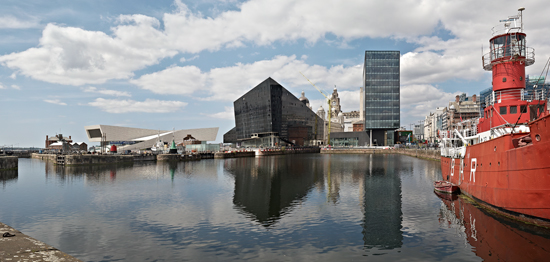 |
|---|---|
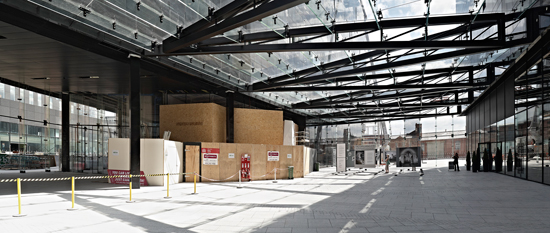 |
|
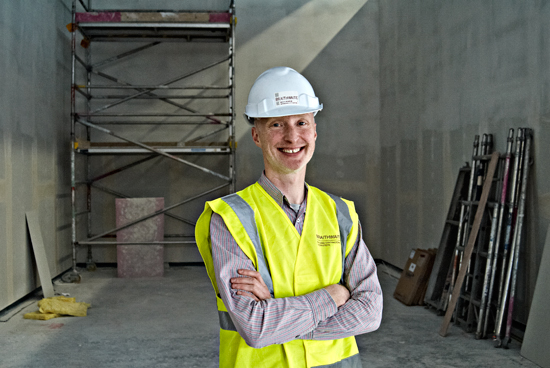 |
|
Open Eye, Liverpool, in development (top, middle); Director Patrick Henry at the new site (above)
|
|
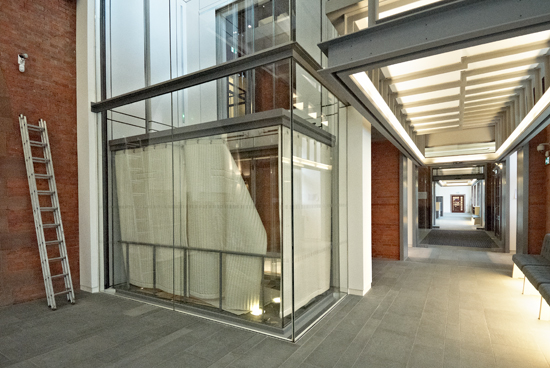 |
|
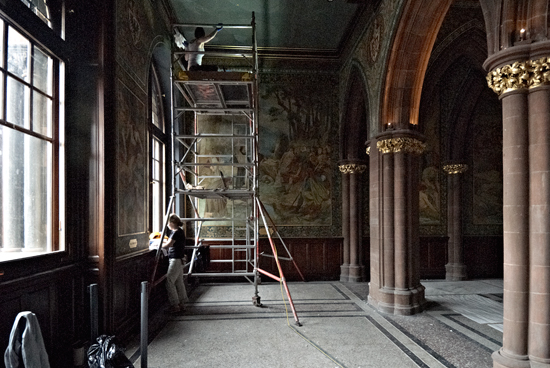 |
|
The Scottish National Portrait Gallery's opened-up ground floor (top); conservators at work (above)
|
|
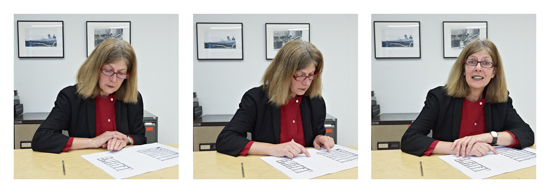 |
|
Brett Rogers, Director of the Photographers' Gallery, with plans for the new building (above)
|
|
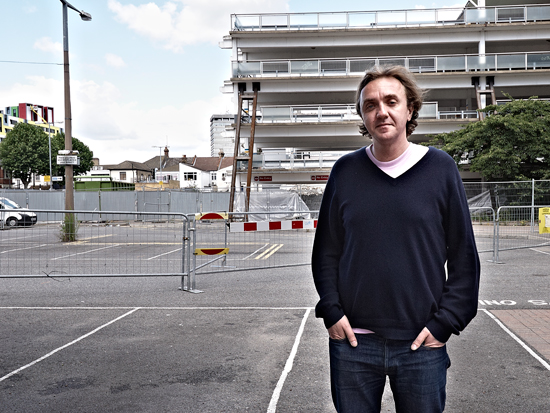 |
|
Andrew Hunt, Director of Focal Point, at the site of the new gallery in Southend (above)
|
|